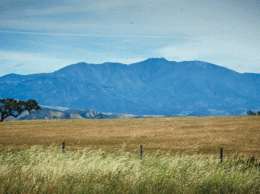Ruling on Chumash property key to Santa Ynez Valley future
IN THIS ARTICLE
- Top Stories Topic
- Stephen Nellis Author
By Stephen Nellis Monday, August 23rd, 2010
The fate of a 6.9-acre plot near the Chumash Casino could determine the future shape of the Santa Ynez Valley, one of the top tourist destinations in the Tri-Counties.
The Santa Ynez Band of Chumash Indians is working to annex the parcel to build a cultural center, museum and 27,600-square-foot, two-story commercial building. Whether the tribe is successful in bringing that land into what’s known as a federal trust could have a big impact on its development plans for a much bigger property: a $40 million, 1,390-acre ranch it acquired from the family of late actor and developer Fess Parker earlier this year.
Bringing land into a federal trust is important because it allows a tribe to tax and develop the land under its own rules instead of state and county rules. The Chumash have developed about 100 acres of their 139-acre reservation.
Whether the Chumash can take land into trust is likely to have a big impact on the tribe’s plans for Camp Four, nearly 1,400 acres at the crossroads of highways 154 and 246 — the most prominent intersection in the valley. It runs up against the town of Santa Ynez and the Chumash Casino Resort, the largest employer in the valley and the tribe’s money-maker.
Apparently frustrated with his prospects at developing Camp Four, Parker turned to the Chumash in 2004 and suggested a joint venture. The Chumash would annex more than 700 acres to build hundreds of luxury homes, golf courses, a hotel resort and an equestrian center.
The project faced steep opposition in the valley and was shelved.
Preservation of Los Olivos, or POLO, an advocacy group, has been fighting a Chumash application to take a 6.9-acre parcel into trust in federal court and before the U.S. Bureau of Indian Affairs. In the most recent phase of the litigation, the group is arguing that a February 2009 U.S. Supreme Court decision, Carcieri v. Salazar, dictates that only tribes recognized in 1934 or earlier fall under the act of Congress that lets tribes take land into a federal trust.
POLO was successful in getting the case brought back before Bureau of Indian Affairs to decide whether the Chumash were federally recognized in 1934.
“Our position is that the group that’s out in Santa Ynez were not recognized, if at all, until 1964, when the federal government accepted their constitution,” said Mark Rochefort, an attorney for the group.
Frances Snyder, a spokeswoman for the Chumash, said the tribe does not comment on ongoing litigation. However, the tribe supported holding a hearing over the Carcieri case issues, suggesting that it believes it has evidence in its favor.
Carl Artman, an attorney with the Wisconsin law firm Godfrey & Kahn who works for tribal clients and is not involved with the Chumash dispute, said it’s still unclear what kind of proof tribes will need to be considered federally recognized in 1934. While a federally accepted tribal constitution would almost certainly count, treaty negotiations and other official correspondence between the tribe and the government might prove sufficient. The Supreme Court’s decision is too fresh to tell, Artman said.
“These are cases of first impression,” he said. “Nobody really knows what the standard is by which these will be judged. It could be very low, or it could be quite robust.”
If the bar is low, Artman said the Chumash may have a case if they have been in contact with the various governments of California since the days of Spanish rule. “I thought the Chumash had a long history in California. I’m a little surprised to see this challenge,” Artman said.
Artman also noted that there is renewed lobbying push on in the U.S. Congress to amend the statues named in the Carcieri case. But Rochefort, the attorney with POLO, said the group also plans to use another 2009 U.S. Supreme Court decision, Hawaii v. Office of Hawaiian Affairs, to support its argument.
In that case, the Supreme Court suggested that it would “raise grave constitutional concerns” if a law passed by Congress after a state was admitted into the union gave the federal government authority to take land into trust that had once been ceded to a state.
Rochefort said his legal team uncovered an 1850 California statute that suggested the land the Chumash want to take into trust was given to the state of California by the federal government when California transitioned into statehood. That makes it ineligible to be taken into trust under the basis of legislation like the 1934 act named in the Carcieri case, he said.
“The Hawaii case puts greater limitations on the executive branch [which oversees the Bureau of Indian Affairs] than it did before in terms of what properties it can take into trust and what it cannot, and it does so on the basis of the Constitution,” Rochefort said.
Rochefort concedes the claim is bold and would bar many attempts to take land into trust in California. Artman, the Wisconsin attorney, said, “I’ve never seen the Hawaii case used in this matter. After rereading the case, I don’t see its applicability.”
POLO presents itself as a “group of citizens who are dedicated to preserving the highest quality of life in our rural community.” Its conflict with the Chumash can also be viewed as struggle among businesspeople over what the future of the Santa Ynez Valley should look like.
According to its filings with the Internal Revenue Service, from 2006 to 2008 POLO’s president and vice president were Doug and Sue Herthel, founders of the Alamo Pintado Equine Medical Center, a nationally known research center. Kathy
Cleary is the group’s current president, and Rolf Richter is the current vice president. Between 2006 and 2008, the group listed $1.27 million in revenue and $1.33 million in expenses.
Editor’s Note: This story was updated Aug. 23 to correct the spelling of Mark Rochefort’s name and to reflect the current leadership of POLO.











